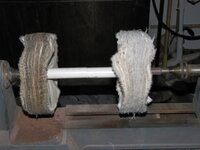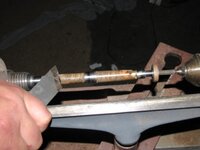I consider myself still somewhat a newbie.  This is why I have so many questions I guess. I am talking about "sanding down" the blank to ready the new creation for a finish. Yes, I want to get to a point where very little sanding is needed using better tool technique. I also know there are different ways to finish. Questions about finshing maybe later...
This is why I have so many questions I guess. I am talking about "sanding down" the blank to ready the new creation for a finish. Yes, I want to get to a point where very little sanding is needed using better tool technique. I also know there are different ways to finish. Questions about finshing maybe later... 
Here's what I am getting to:
What are the thoughts about using 0000 Steel Wool vs. 600 grit Sandpaper (or finer) or MM before say a CA finish on wood?
Steel Wool on any pen making or sanding?
Do I need the 0000 Steel Wool at all?
I have seen on some posts on IAP that "No Steel Wool touched this...". I have darkened some and/or ruint some lighter woods with the 0000 Wool and have learned lessons from that. I feel I have better results using the 0000 Wool on acrylics and plastics, even antler and bone. Perhaps some of you may use sandpaper to a higher grit? Especially on woods and again before the untimate finish. Let me know...
You replies are very much appreciated.
Thanx,
Randy
Here's what I am getting to:
What are the thoughts about using 0000 Steel Wool vs. 600 grit Sandpaper (or finer) or MM before say a CA finish on wood?
Steel Wool on any pen making or sanding?
Do I need the 0000 Steel Wool at all?
I have seen on some posts on IAP that "No Steel Wool touched this...". I have darkened some and/or ruint some lighter woods with the 0000 Wool and have learned lessons from that. I feel I have better results using the 0000 Wool on acrylics and plastics, even antler and bone. Perhaps some of you may use sandpaper to a higher grit? Especially on woods and again before the untimate finish. Let me know...
You replies are very much appreciated.
Thanx,
Randy


